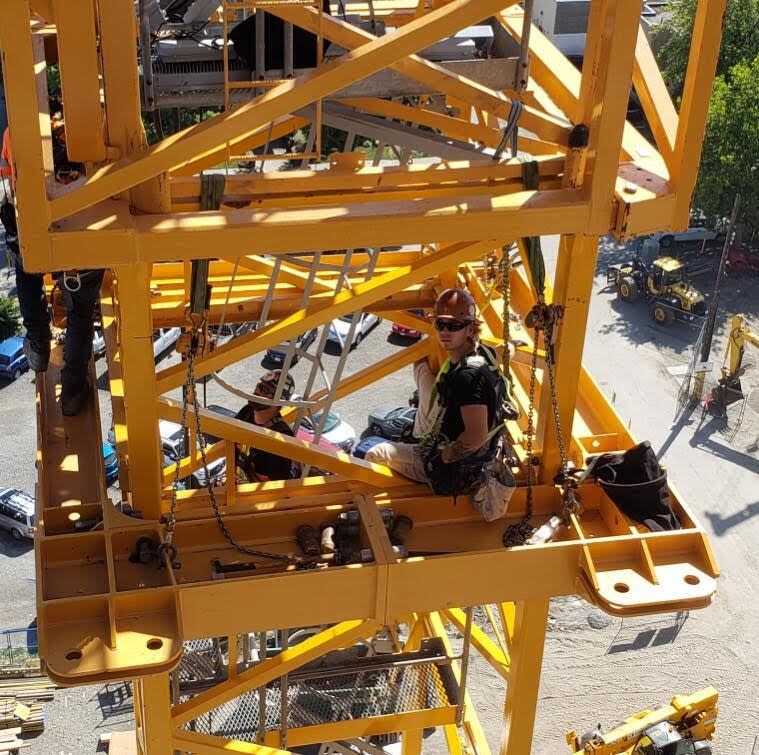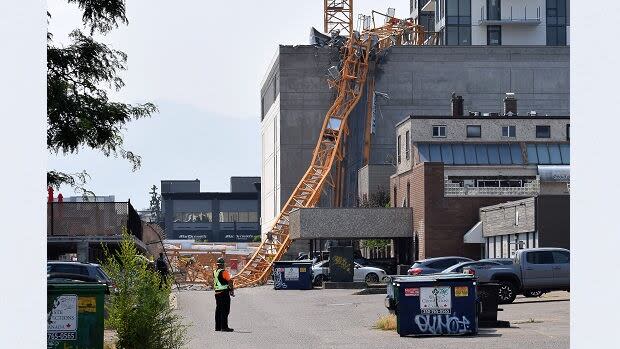Changes to B.C. crane safety standards recommended after spate of fatalities, accidents
The agency responsible for worker safety in British Columbia is recommending changes to crane operation safety standards after a spate of accidents and deaths in recent years.
WorkSafeBC says its new risk-reduction strategy is meant to "identify and address gaps in crane safety."
The document is the result of a consultation with 130 crane-sector stakeholders, including labour representatives, tower crane operators, employers, prime contractors and rental companies.
In 2021, a tower crane collapse at a Kelowna construction site killed five workers. Earlier this year, a crane that lost its load killed a worker at the Oakridge Park construction site in Vancouver.
The father of Cailen Vilness, a construction worker killed in the Kelowna crane collapse three years ago, said improvements to crane safety have taken a long time to materialize.
"There's a lot of change that's been needed, and there's been a lot of accidents since the one in Kelowna," said Chris Vilness. "I'm eager to see change so nobody else has to be in my situation."

Some of the new recommendations include:
Review the existing crane operator certification program to ensure it supports safe work.
Explore how to improve the training and skills of supervisors, riggers and workers involved in the assembly, operation, disassembly or repositioning of cranes.
Review options for employers responsible for the assembly, operation, disassembly or repositioning of tower cranes, including registration and licensing.
Increase the staffing and capacity of WorkSafeBC's specialized crane inspection team.
Develop new regulations to address the frequency of tower crane inspections.
Review and update the Occupational Health and Safety Regulation — including regulations related to cranes and rigging — to ensure they meet the needs of increasingly complex worksites.
Ensure that the B.C. Association for Crane Safety is equipped to service and support workers and employers in the sector.
The Kelowna RCMP announced in February it had recommended a charge of criminal negligence causing death in the collapse of a crane arm in July 2021 that killed construction workers Cailen Vilness, 23, Jared Zook, 32, brothers Eric and Patrick Stemmer, age 32 and 28 respectively.
A fifth person, Brad Zawislak, 43, was crushed to death in his office adjacent to the site where Mission Group was building a residential tower in downtown Kelowna.
At the time, police said the crane was in the process of being dismantled when something "catastrophic" happened.

Todd McDonald, head of prevention services for WorkSafeBC, says the number of cranes in operation and the complexity of work sites is increasing.
"...we need to ensure that employers provide the training, supervision and safe work practices needed to keep workers safe in an evolving work environment," he said.
"These recommendations have been a long time coming," said Brian Cochrane of the International Union of Operating Engineers (IUOE) Local 115.
"When done right, these changes will improve confidence for the industry, workers, and the public, and help further prevent deaths and injuries related to tower cranes."

 Yahoo News
Yahoo News 
